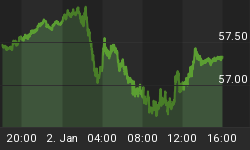In 2001 I was asked to write the "Ten Rules of Silver Investing" for the investing rules book published in Great Britain in 2001. The complete title of this book is The Global-Investor Book of Investing Rules -- Invaluable Advice from 150 Master Investors. My portion is available for free to anyone on the Internet willing to sign up here. In this week's article, let us examine Silver Investing Rule Number Six.
What's yours is yours - so keep it that way.
While it is wise to keep some of your silver where you can get to it easily, it is also important to keep the bulk of your metal in a safe place -- especially as your holdings increase. However, if you establish an account with a brokerage warehouse or other public storage facility, you should make sure your holdings are kept segregated and that you can inspect them when you wish.
Anyone who has studied the Silver-Investor.com Web site knows there is far more paper silver than real silver in the world. In last week's article, we discussed the fact that there is 100 times as much paper silver as there is actual metal. Certainly, I am not the only silver commentator pounding the table on this point, and we will look at a few more in this article.
In fact, my primary premise is that the real sustained move up in silver will not occur until the market recognizes this fact. You certainly can participate in alternative precious metals investments such as pool accounts or options, but remember, you are dealing in the paper world and should expect settlement in paper not in metal. I wish to be crystal clear: fully paid COMEX warehouse certificates held by you in your name do comprise real silver.
Many commentators have questioned various certificate programs from locations far and wide.
Ted Butler has described how there are maybe "billions of ounces of silver represented in bank certificate form that have no real metal backing." Ted goes on to state that bad things may happen to the owners and issuers of those unbacked silver certificates when the price of silver explodes. Butler mentions that banks all over the world, and in particular Swiss banks, have issued many of these silver certificates. Butler's conclusion is that you should, if you own silver in any questionable paper form, switch to an unquestioned form.
Jason Hommel has begun a dialogue with the Perth Mint on their certificate program and recently wrote to various agencies of the government of Western Australia. Hommel states in his open letter to these various government agencies, "You (Western Australian Government) may have a growing precious metals liability of over 880 million Australian dollars at the Perth Mint, which is backed by you, the government of Western Australia."
Hommel states he has received about 30-50 complaints about the Perth Mint over the last few months from investors who have tried to purchase silver bullion coins, kilo bars, 100-ounce bars, and 1,000-ounce bars and have had their orders refused or delayed. The way to de-leverage the whole system is to take real metal into your possession.
Be real, but get real to begin with. In other words, we have always advocated beginning a precious metals portfolio with the real metal first; once that is accomplished, if you wish to speculate further you can then branch out into other areas such as mining equities or other speculative situations.
















